Resident Crews of the International Space Station (ISS)
![]()
ISS: Expedition 52 |
 |
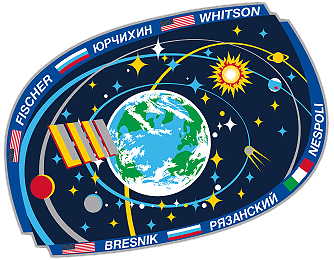 |
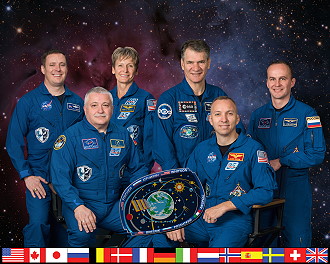 |
alternative crew photoalternative crew photo |
|
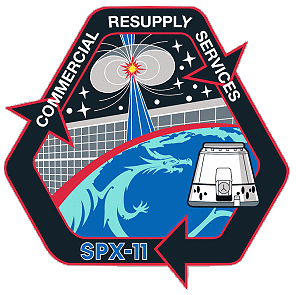 |
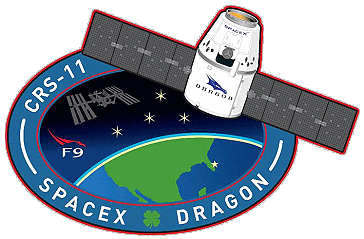 |
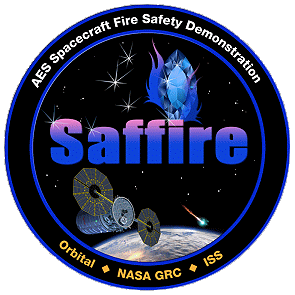 |
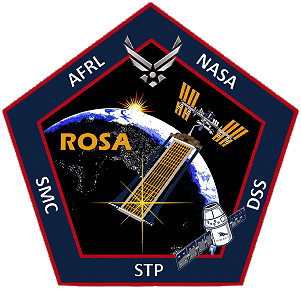 |
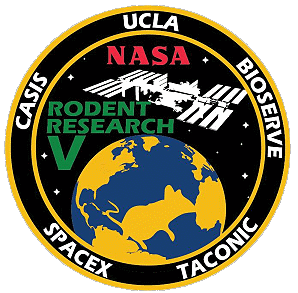 |
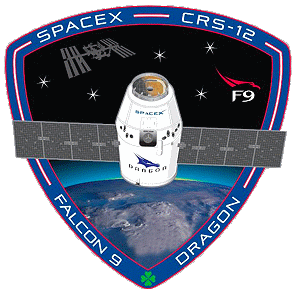 |
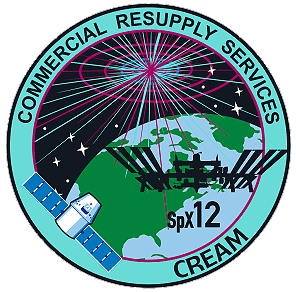 |
|
![]()
Crew, launch- and landing data
| No. | Nation | Surname | Given names | Position | Spacecraft (launch) |
Launch date |
Launch time |
Spacecraft (landing) |
Landing date |
Landing time |
Mission duration |
Orbits |
| 1 | Yurchikhin | Fyodor Nikolayevich | ISS-CDR | Soyuz MS-04 | 20.04.2017 | 07:13:43.171 UTC | Soyuz MS-04 | 03.09.2017 | 01:21:41.3 UTC | 135d 18h 07m 58s | 2112 | |
| 2 | Fischer | Jack David "2fish" | Flight Engineer-2 | Soyuz MS-04 | 20.04.2017 | 07:13:43.171 UTC | Soyuz MS-04 | 03.09.2017 | 01:21:41.3 UTC | 135d 18h 07m 58s | 2112 | |
| 3 | Whitson | Peggy Annette | Flight Engineer-3 | Soyuz MS-03 | 17.11.2016 | 20:20:13.099 UTC | Soyuz MS-04 | 03.09.2017 | 01:21:41.3 UTC | * 289d 05h 01m 29s | 4551 | |
| 4 | Ryazansky | Sergei Nikolayevich | Flight Engineer-4 | Soyuz MS-05 | 28.07.2017 | 15:41:12,285 UTC | Soyuz MS-05 | 14.12.2017 | 08:37:47.3 UTC | 138d 16h 56m 35s | 2158 | |
| 5 | Bresnik | Randolph James "Randy" | Flight Engineer-5 | Soyuz MS-05 | 28.07.2017 | 15:41:12,285 UTC | Soyuz MS-05 | 14.12.2017 | 08:37:47.3 UTC | 138d 16h 56m 35s | 2158 | |
| 6 | Nespoli | Paolo Angelo | Flight Engineer-6 | Soyuz MS-05 | 28.07.2017 | 15:41:12,285 UTC | Soyuz MS-05 | 14.12.2017 | 08:37:47.3 UTC | 138d 16h 56m 35s | 2158 |
* including a leap second on December 31, 2016 at 23:59:60 UTC
unofficial Backup Crew
| No. | Nation | Surname | Given names | Position |
| 1 | Ryazansky | Sergei Nikolayevich | ISS-CDR | |
| 2 | Bresnik | Randolph James "Randy" | Flight Engineer | |
| 3 | Fischer | Jack David "2fish" | Flight Engineer | |
| 4 | Misurkin | Aleksandr Aleksandrovich | Flight Engineer | |
| 5 | Vande Hei | Mark Thomas | Flight Engineer | |
| 6 | Kanai | Norishige | Flight Engineer |
 |
 |
 |
Expedition Report
|
ISS Expedition 52 began with the undocking of
spacecraft Soyuz
MS-03 on June 02, 2017 at 10:47:04
UTC. The former Expedition 51 (Oleg
Novitsky and Thomas
Pesquet) returned safely to Earth. Peggy
Whitson stayed on the station for a long-term mission. The uncrewed Dragon CRS-11 or SpX-11 cargo spacecraft launched on June 03, 2017 at 21:07:38 UTC on a Falcon 9 rocket from Launch Complex 39A at NASA's Kennedy Space Center in Florida. This was the eleventh mission by SpaceX under NASA's Commercial Resupply Services contract. In addition to supplies and equipment, Dragon delivered several science investigations to the space station, including: the Neutron star Interior Composition Explorer (NICER) instrument will measure neutron stars and test, for the first time in space, technology that uses pulsars as navigation beacons; the Roll-Out Solar Array, or ROSA, will test deployment and retraction of a new type of solar panel that rolls open in space like a party favor and is more compact than current rigid panel designs; and an Earth-viewing imaging platform created by Teledyne Brown called MUSES, which stands for Multiple User System for Earth Sensing, that will house high-resolution digital cameras and hyperspectral imagers. Dragon carried 5,970.1 pounds (2,708 kilograms): 3,761.1 pounds (1,665 kilograms) pressurized cargo (with packaging) and 2,209 pounds (1,002 kilograms) unpressurized cargo. About 10 minutes after launch, Dragon reached its preliminary orbit. It then deployed its solar arrays and began a carefully choreographed series of thruster firings to reach the space station. When it arrived to the space station on June 05, 2017, Expedition 52 Flight Engineers Jack Fischer and Peggy Whitson grappled Dragon at 13:53 UTC. It was attached to the Earth-facing side of the Harmony module of the International Space Station at 16:07 UTC. Cygnus OA-7 ("S.S. John Glenn") left the space station on June 04, 2017 with several tons of trash for a fiery reentry into Earth's atmosphere. Peggy Whitson and Jack Fischer released the uncrewed transporter at 13:10 UTC. Cygnus remained in orbit for a week in support of the SAFFIRE experiment and the deployment of four small Nanoracks satellites before Orbital ATK flight controllers commanded it to deorbit on June 11, 2017. It burned up harmlessly in the Earth's atmosphere over the Pacific Ocean. The launch of the unpiloted Russian Progress MS-06 occurred on June 14, 2017 at 09:20:13 UTC from the Baikonur Cosmodrome in Kazakhstan. The freighter delivered three tons of food, fuel and supplies to the International Space Station. The new-series spacecraft Progress MS and Soyuz MS were developed as a result of a radical upgrade of Progress M and Soyuz TMA spacecraft. The onboard command radio system Kvant-B was replaced with an integrated command and telemetry system with an additional telemetry channel. The new command radio link will make it possible to receive signals via relay satellites Luch-5, which will significantly increase the radio coverage zone for the spacecraft - up to 70% of an orbit. The spacecraft are equipped with an advanced onboard radio system for rendezvous and docking Kurs-NA. As compared with an earlier model, Kurs-A, it has improved mass and dimensions parameters and makes it possible to delete from the spacecraft hardware configuration one of the three radio antennas. Instead of the analog TV system Klyost, the spacecraft use a digital TV system, which makes it possible to maintain communications between the spacecraft and the station via a space-to-space RF link. Also included into the onboard equipment of the Soyuz MS and Progress MS series spacecraft to replace the equipment that is being phased out of production is a new Digital Backup Loop Control Unit developed by RSC Energiya, an upgraded Rate Sensor Unit BDUS-3A and a LED headlight SFOK. Thanks to the use of new ground and onboard radio systems, it became possible to use state-of-the-art data transmission protocols, which resulted in improved operational stability of spacecraft control system. The spacecraft docked to the Zvezda docking compartment of the space station at 11:37:36 UTC on June 16, 2017. Progress MS-06 spent six months docked at the station before departing on December 28, 2017 for its deorbit into the Earth's atmosphere. Completing a four-week stay at the space station, the Dragon cargo capsule departed the research outpost on July 03, 2017 at 06:41:30 UTC, when astronauts Jack Fischer and Peggy Whitson commanded the station's robotic arm to release the spacecraft. Dragon's thrusters were fired to move the spacecraft a safe distance from the station before SpaceX flight controllers in Hawthorne, California, commanded its deorbit burn. SpaceX's Dragon spaceship, carrying more than 4,100 pounds (1,860 kg) of cargo and research specimens, descended to a predawn splashdown in the Pacific Ocean southwest of Los Angeles, completing the first re-flight of one of SpaceX's unpiloted supply ships to the International Space Station. Crew members on the International Space Station installed a recently-delivered science payload that will provide a unique vantage point for Earth observation. The Multi-User System for Earth Sensing (MUSES) will provide opportunities for imaging payloads supporting research, scientific studies and humanitarian efforts for both government and commercial customers. When fully installed, the MUSES platform will provide a location for Earth-viewing instruments such as high-resolution digital cameras and hyperspectral imagers. It can accommodate up to four payloads simultaneously, and can be robotically serviced or upgraded. MUSES includes a server on the station that can store and transmit data from the payloads back to Earth for a variety of uses including disaster response, maritime domain awareness, agricultural applications, air and water quality, mining and atmospheric investigations. After a thorough check-out of a platform for Earth observation, crew members deployed an investigation looking into deep space. The Neutron Star Interior Composition Explorer (NICER) studies the physics into the glowing cinders left behind when massive stars explode as supernovas. Neutron stars consist of ultra-dense matter that may eventually collapse to a black hole. The nature of this matter cannot be produced in a laboratory and the cosmic rays produced by the phenomena do not penetrate Earth's atmosphere. Neutron stars are also known as pulsars due to the pattern of X-rays emanating from the explosion. These pulses are reliable as atomic clocks in keeping accurate time, which is essential for accurate deep space navigation. Pulsar navigation could work similarly to GPS navigation on Earth, providing precise positioning for spacecraft throughout the solar system. The NICER investigation also enables new studies of sources of X-rays, advancing scientific understanding, education and technical development for the benefit of people on Earth. Crew members replaced some hardware to continue investigations using the Multi-User Droplet Apparatus (MDCA) in the Combustion Integration Rack (CIR) on the space station. The MDCA is used to perform combustion tests using small droplets of various fuels to see how they burn in microgravity. Another round of combustion investigation will begin in the coming weeks to study the most efficient fuels that we could use on Earth and for missions to deep space. Until June 19, 2017, engineers on the ground remotely operated the Canadarm2 to extract the Roll Out Solar Array from Dragon. The experiment, also known as ROSA, will remain attached to the Canadarm2 over seven days to test the effectiveness of the advanced, flexible solar array that rolls out like a tape measure. Traditional solar panels used to power satellites can be bulky with heavy panels folded together using mechanical hinges. An experiment that recently arrived at the International Space Station will test a new solar array design that rolls up to form a compact cylinder for launch with significantly less mass and volume, potentially offering substantial cost savings as well as an increase in power for satellites. Smaller and lighter than traditional solar panels, the Roll-Out Solar Array, or ROSA, consists of a center wing made of a flexible material containing photovoltaic cells to convert light into electricity. On either side of the wing is a narrow arm that extends the length of the wing to provide support, called a high strain composite boom. The booms are like split tubes made of a stiff composite material, flattened and rolled up lengthwise for launch. The array rolls or snaps open without a motor, using stored energy from the structure of the booms that is released as each boom transitions from a coil shape to a straight support arm. ROSA can be easily adapted to different sizes, including very large arrays, to provide power for a variety of future spacecraft. It also has the potential to make solar arrays more compact and lighter weight for satellite radio and television, weather forecasting, GPS and other services used on Earth. In addition, the technology conceivably could be adapted to provide solar power in remote locations. The technology of the booms has additional potential applications, such as for communications and radar antennas and other instruments. The ROSA investigation looks at how well this new type of solar panels deploys in the microgravity and extreme temperatures of space. The investigation also measures the array's strength and durability and how the structure responds to spacecraft maneuvers. The investigation will monitor the array deployed in full sun and full shade and collect data on how much it vibrates when moving from shade to light. This vibration, known as thermal snap, could present challenges in operating satellites with sensitive functions, and the researchers want to learn how to avoid those challenges with ROSA. The investigation will measure power produced by the array to see how ROSA's thin, crystalline photovoltaic cells hold up during launch. In addition, researchers want to see how the array handles retraction. ROSA was developed as part of the Solar Electric Propulsion project sponsored by NASA's Space Technology Mission Directorate. NASA tested the ROSA technology in vacuum chambers on Earth several years ago, and this is its first test in space. This solar array technology was developed to power large spacecraft using highly-efficient electric propulsion on missions to deep space including Mars and the moon. The unpiloted Russian Progress MS-05 cargo craft departed the International Space Station on July 20, 2017 after a five-month stay. Loaded with trash and other items no longer needed by the Expedition 52 crew, the Progress automatically undocked from the Pirs Docking Compartment on the Earth-facing side of the Russian segment of the complex at 17:46:29 UTC. With its mission completed, the cargo craft, which first arrived at the complex on February 24, 2017, used its engines to conduct a separation maneuver, allowing it to move to a safe distance away from the station. The Progress' engines executed a deorbit burn at 20:58 UTC to enable it to drop out of orbit for its entry back to Earth where it burned up harmlessly in the atmosphere over the Pacific Ocean. Following a six hours solo flight Soyuz MS-05 docked to ISS on July 28, 2017. Sergei Ryazansky, Randolph Bresnik and Paolo Nespoli became the ISS Expedition 52 (together with ISS Expedition 51 crew members Fyodor Yurchikhin, Jack Fischer and Peggy Whitson). With the arrival Expedition 52 became a six-person-crew. On August 09, 2017, an ISS reboost was performed using Progress MS-06 thrusters. This reboost was to set up for Soyuz MS-04 landing planned on September 03, 2017 and the launch of Soyuz MS-06 on September 12, 2017. The engines started at 12:25 UTC and fired 125.1 seconds. The ISS got 0.25 m/sec. more speed. The actual parameters are 401.89 km x 425.60 km. The ISS needs 92.59 minutes for each orbit. NASA commercial cargo provider SpaceX launched its 12th commercial resupply services mission to the International Space Station for 16:31:37 UTC on August 14, 2017. Loaded with more than 6,400 pounds (2,900 kg) of research, crew supplies and hardware, the SpaceX Dragon spacecraft (CRS-12 or SpX-12) launched on a Falcon 9 rocket. The payloads included crucial materials to directly support several of the more than 250 science and research investigations to be conducted on the orbiting laboratory during Expeditions 52 and 53. Among the experiments are: Crystallization of LRRK2 Under Microgravity Conditions, an investigation for the Michael J. Fox Foundation that could help scientists better understand the pathology of Parkinson's and aid in the development of therapies; Cosmic-Ray Energetics and Mass investigation (CREAM), which will place a balloon-borne instrument aboard the International Space Station to measure the charges of cosmic rays over a period of three years; Rodent Research-9, to evaluate the physiological changes in mice that occur during a long-duration spaceflight mission in order to improve understanding about how vision loss and joint changes occur in astronauts after long stays in space; NanoRacks-SMDC-Kestrel Eye, a microsatellite for the U.S. Army Space and Missile Defense Command (SMDC) and Army Forces Strategic Command carrying an optical imaging system payload to validate the concept of using microsatellites in low-Earth orbit to support critical operations. About 10 minutes after launch, Dragon reached its preliminary orbit and deployed its solar arrays. A carefully choreographed series of thruster firings allowed the spacecraft to rendezvous with the space station on August 16, 2017. Jack Fischer and Paolo Nespoli grappled Dragon using the space station's robotic arm (10:52 UTC). It then was installed on the station's Harmony module (13:07 UTC). The Dragon spacecraft will spend approximately one month attached to the space station. It remained until September 17, 2017 when the spacecraft returned to Earth with results of earlier experiments, splashing down in the Pacific Ocean off the coast of Baja California. Fyodor Yurchikhin and Sergei Ryazansky exited the station's Pirs airlock and ventured outside the International Space Station on August 17, 2017 to deploy several nanosatellites, collect research samples and perform structural maintenance (7h 34m). Sergei Ryazansky began the extravehicular activities with the manual deployment of five nanosatellites from a ladder outside the airlock. The satellites, each of which has a mass of about 11 pounds (5 kg), have a variety of purposes. One of the satellites, with casings made using 3-D printing technology, will test the effect of the low-Earth-orbit environment on the composition of 3-D printed materials. Another satellite contains recorded greetings to the people of Earth in 11 languages. A third satellite commemorates the 60th anniversary of the Sputnik 1 launch and the 160th anniversary of the birth of Russian scientist Konstantin Tsiolkovsky. The spacewalkers also collected residue samples from various locations outside the Russian segment of the station and installed handrails and struts to facilitate future excursions. On August 27, 2017, an ISS reboost was performed using Progress MS-06 thrusters. This reboost was to set up for Soyuz MS-04 landing planned on September 03, 2017 and the launch of Soyuz MS-06 on September 12, 2017. The engines started at 04:55 UTC and fired 177 seconds. The ISS got 0.35 m/sec. more speed. The actual parameters are 402.2 km x 422.5 km. The ISS needs 92.60 minutes for each orbit. Finally, the station command changed from Russian cosmonaut Fyodor Yurchikhin to US astronaut Randolph Bresnik. With undocking of Soyuz MS-04, carrying Fyodor Yurchikhin, Jack Fischer and Peggy Whitson, on September 02, 2017 at 21:58:01 UTC the Expedition 52 concluded and the new ISS Expedition 53 began. Systemic Therapy of NELL-1 for Osteoporosis (Rodent Research-5): When people and animals spend extended periods of time in space, they experience bone density loss, or osteoporosis. In-flight countermeasures, such as exercise, prevent it from getting worse, but there isn't a therapy on Earth or in space that can restore bone that is already lost. The Systemic Therapy of NELL-1 for osteoporosis (Rodent Research-5) investigation tests a new drug that can both rebuild bone and block further bone loss, improving health for crew members. Exposure to microgravity creates a rapid change in bone health, similar to what happens in certain bone-wasting diseases, during extended bed rest and during the normal aging process. The results from this ISS National Laboratory-sponsored investigation build on previous research also supported by the National Institutes for Health and could lead to new drugs for treating bone density loss in millions of people on Earth. Fruit Fly Lab-02: Exposure to reduced gravity environments can result in cardiovascular changes such as fluid shifts, changes in total blood volume, heartbeat and heart rhythm irregularities, and diminished aerobic capacity. The Fruit Fly Lab-02 study will use the fruit fly (Drosophila melanogaster) to better understand the underlying mechanisms responsible for the adverse effects of prolonged exposure to microgravity on the heart. Flies are smaller, with a well-known genetic make-up, and very rapid aging that make them good models for studying heart function. This experiment will help to develop a microgravity heart model in the fruit fly. Such a model could significantly advance the study of spaceflight effects on the cardiovascular system and facilitate the development of countermeasures to prevent the adverse effects of space travel on astronauts. The Efficacy and Metabolism of Azonafide Antibody-Drug Conjugates (ADCs) in Microgravity investigation seeks to activate immunogenic cell death within the cancer cells, which should kill the cancer and prevent the disease from reoccurring in the future. The experiment explores a new drug and antibody combination that may increase the effectiveness of the treatment and decrease secondary side effects associated with chemotherapy. "In space, you can grow larger and larger cancer tumors spherical in shape, so you have a better model of what's happening in the human body," said Luis Zea, research associate for Bioserve Space Technologies. "The chances of having false negatives or false positives is decreased." Knowing how drug combinations work in microgravity is increasingly important as we plan for future deep-space missions, where we may need to be able to treat diseases such as cancer. "We don't know if the cells will be metabolizing the drug at the same rate as they do on Earth," said Dhaval Shah, co-investigator. "In the long term, we need to be sure what drugs are going to work." To treat cancer currently, chemotherapy works by orally and intravenously injecting the patient with a drug to attack and kill cancer cells. Unfortunately, this untargeted approach also kills healthy cells. The ADCs investigation is a combination of two molecules: a cancer-killing Azonafide drug and an antibody, which may enable a targeted approach for cancer treatment by only allowing the drug to kill cancer cells, while leaving the healthy cells intact. "One of the reasons cancer cells grow in certain individuals is their defense mechanism fails to recognize them," said Shah. "This molecule also has the ability to wake up, or release the break, on existing immune cells within the cancer. In any given tumor, when these molecules are released [from the cancer cell], they 'wake up' the surrounding immune cells and stimulate the body's own immune system, making it recognize and kill the cancer cells itself." Cancer patients receiving chemotherapy often experience side effects such as nausea, fatigue, hair loss, cognitive impairment, and more during the course of treatment. Although this combination may decrease many of the negative side effects of chemotherapy, it may also have its own side effects, though potentially less severe and short-lived. "The antibody is like a connector block," said Zea. "On one side it will only bind to the drug and the other side, may only bind to cancer cells and not healthy cells. So, by combining these two, the idea is to decrease the nasty side effects of chemotherapy." MARROW measures fat changes in the bone marrow before and after exposure to microgravity. This research is producing the first data on bone marrow fat changes in microgravity. Bone marrow is a vital organ responsible for the production of all red and white blood cells. The investigation also measures specific changes of red and white blood cell functions. Bone marrow fat is measured using magnetic resonance, while red blood cell function is measured with a breath sample analyzed with a gas chromatograph, and white blood cell function is studied through the cells' genetic expression. Data from this study may lead to treatments that would enable safer human space exploration and better recovery from prolonged bed rest on Earth. Crew members used light meter hardware for the Testing Solid State Lighting Countermeasures to Improve Circadian Adaptation, Sleep, and Performance During High Fidelity Analog and Flight Studies for the International Space Station (Lighting Effects) investigation. This investigation tests a new lighting design using light-emitting diodes to replace the fragile fluorescent lights currently used on the space station. Measurements of various light settings were taken to ensure the LEDs provide enough light to be able to complete science experiments while improving cognitive performance. Light-emitting diodes (LED) are adjustable for intensity and color - the blue, white or yellow sections of the light spectrum. Scientists and doctors want to determine if the new lights can improve crew sleep cycles and alertness during the day. Besides the potential health benefits, these lights also require less energy to run and are lower in mass, making them a prime candidate for use on future spacecraft. Using these same types of lights on Earth, and subtly adjusting their color temperature during the day may help people be more productive, especially those who work a night shift. The Seedling Growth-3 experiment is third part of a European Space Agency (ESA) series using the plant Arabidopsis thaliana - a small flowering plant considered a model organism - to determine the effects of gravity and different light sources on cell growth and proliferation. The proposed research is relevant to understanding plant requirements in space. Arabidopsis thaliana is an excellent model plant for spaceflight experiments because of its small size and simple growth requirements. Improved knowledge of these basic biomechanical processes is vital to use consumable plants in life support systems for long-duration space missions. This project deals with light and gravity sensing, which are both key parameters for the growth and development of plants. Understanding these factors will help develop strategies to optimize light sensing, and, in turn, better modify plant species by using different light sources and other biotechnological approaches to improve crops. This research also could potentially improve agricultural biotechnology on Earth to increase agricultural production. Crew members also completed calibration of the Bone Densitometer, an X-ray device the size of a standard microwave oven that can measure bone density, muscle and fat of mice while they are in orbit. The technology is being tested for possible use on human space travelers. Crew members on long-duration space missions suffer bone density loss, which they counteract by exercising daily and eating healthy meals. Future missions lasting a year or more may require additional countermeasures to keep crew members healthy. Researchers are studying the effects of microgravity by evaluating mice flown in space and are using the results to develop treatments for bone density loss in space and on Earth. The Bone Densitometer will be used as a model for studying bone density loss in humans while in space, but verifying its capabilities will help researchers and biotech companies test new therapies, potentially benefiting millions of people who suffer from osteoporosis and other bone density-related ailments. During the stay on board of the ISS the crews of Expeditions 51 / 52 carried out the following scientific experiments (without Russian experiments): ACE-T-9 (Advanced Colloids Experiment ACE-T-9 Marr Imaging, Folding, and Assembly of Colloidal Molecules) ACME (Advanced Combustion Microgravity Experiment) ADCs in Microgravity (Efficacy and Metabolism of Azonafide Antibody-Drug Conjugates (ADCs) in Microgravity) AMS-02 (Alpha Magnetic Spectrometer - 02) ATOMIZATION (Detailed validation of the new atomization concept derived from drop tower experiments--Aimed at developing a turbulent atomization simulator) Aerosol Samplers (Aerosol Sampling Experiment) Aquapad (Aquapad) Area PADLES (Area Passive Dosimeter for Life-Science Experiments in Space) At Home in Space (Culture, Values, and Environmental Adaptation in Space) BASS-II (Burning and Suppression of Solids - II) BEAM (Bigelow Expandable Activity Module) BRIC-22 (Biological Research in Canisters-22) Biochem Profile (Biochemical Profile) Biomolecule Sequencer (Biomolecule Sequencer) Body Measures (Quantification of In-Flight Physical Changes - Anthropometry and Neutral Body Posture) Brain-DTI (Brain-DTI) CALET (CALorimetric Electron Telescope) CASIS PCG 6 (Neutron Crystallographic Studies of Human Acetylcholinesterase for the Design of Accelerated Reactivators) CAST (Crew Autonomous Scheduling Test) CATS (Cloud-Aerosol Transport System) CEO (Crew Earth Observations) CFE-2 (Capillary Flow Experiment - 2) CLYC-Crystal Growth (Crystal Growth of Cs2LiYCl6:Ce Scintillators in Microgravity) CREAM (Cosmic Ray Energetics and Mass) Capillary Structures (Capillary Structures for Exploration Life Support) Cardio Ox (Defining the Relationship Between Biomarkers of Oxidative and Inflammatory Stress and the Risk for Atherosclerosis in Astronauts During and After Long-duration Spaceflight) Circadian Rhythms (Circadian Rhythms) Cool Flames Investigation (Cool Flames Investigation) DECLIC DSI-R (DEvice for the study of Critical LIquids and Crystallization - Directional Solidification Insert-Reflight) DECLIC HTI-R (DEvice for the study of Critical LIquids and Crystallization - High Temperature Insert-Reflight) DOSIS-3D (Dose Distribution Inside the International Space Station - 3D) Detached Melt and Vapor Growth of InI (Detached Melt and Vapor Growth of InI in SUBSA Hardware) Dose Tracker (Dose Tracker Application for Monitoring Medication Usage, Symptoms, and Adverse Effects During Missions) Dynamic Surf (Experimental Assessment of Dynamic Surface Deformation Effects in Transition to Oscillatory Thermo capillary Flow in Liquid Bridge of High Prandtl Number Fluid) ECHO (ECHO) EDOS-2 (Early Detection of Osteoporosis in Space-2) ESA-Active-Dosimeters (European Crew Personal Active Dosimeter) EVERYWEAR (EVERYWEAR) Energy (Astronaut's Energy Requirements for Long-Term Space Flight) ExHAM-CFRP Mirror (Space Environmental Testing of Lightweight and High-Precision Carbon Composite Mirrors) ExHAM-Solar Sail (Space Environment Exposure Tests of Functional Thin-Film Devices for Solar Sail) Exerc-Orthostatic Tolerance (Structured Exercise Training as Countermeasure to Space Flight-Induced Orthostatic Intolerance) FLUIDICS (Fluid Dynamics in Space) FNS (Fast Neutron Spectrometer) Fine Motor Skills (Effects of Long-Duration Microgravity on Fine Motor Skills: 1 year ISS Investigation) Fluid Shifts (Fluid Shifts Before, During and After Prolonged Space Flight and Their Association with Intracranial Pressure and Visual Impairment) Fruit Fly Lab-02 (FFL-02) (The effects of microgravity on cardiac function, structure and gene expression using the Drosophila model) Functional Immune (Functional Immune Alterations, Latent Herpesvirus Reactivation, Physiological Stress and Clinical Incidence Onboard the International Space Station) GRASP (Gravitational References for Sensimotor Performance: Reaching and Grasping) GRIP (Grip) Gecko Gripper (Gecko Gripper) Genes in Space-2 (Genes in Space-2) Group Combustion (Elucidation of Flame Spread and Group Combustion Excitation Mechanism of Randomly-distributed Droplet Clouds) HDEV (High Definition Earth Viewing) Habitability (Habitability Assessment of International Space Station) Honeywell-Morehead-DM-7 (Honeywell-Morehead-DM-7) IPVI (Non-invasive assessment of intracranial pressure for space flight and related visual impairment) ISS Ham Radio (ARISS) (International Space Station Ham Radio (also known as Amateur Radio on the International Space Station (ARISS))) ISS RapidScat (ISS-RapidScat) Immuno-2 (Immuno-2) In-flight Education Downlinks (International Space Station In-flight Education Downlinks) Intervertebral Disc Damage (Risk of Intervertebral Disc Damage after Prolonged Space Flight) JAXA ELF (Electrostatic Levitation Furnace (ELF)) JAXA Low Temp PCG (Japan Aerospace Exploration Agency Protein Crystallization Growth) JAXA PCG (Japan Aerospace Exploration Agency Protein Crystallization Growth) LDST (Long Duration Sorbent Testbed) LMM Biophysics 1 (The Effect of Macromolecular Transport of Microgravity Protein Crystallization) LMM Biophysics 3 (Growth Rate Dispersion as a Predictive Indicator for Biological Crystal Samples Where Quality Can be Improved with Microgravity Growth) Lighting Effects (Testing Solid State Lighting Countermeasures to Improve Circadian Adaptation, Sleep, and Performance During High Fidelity Analog and Flight Studies for the International Space Station) MAGVECTOR (MagVector) MATISS (MATISS) MAXI (Monitor of All-sky X-ray Image) MED-2 (Miniature Exercise Device) MOBIPV (Mobile Procedure Viewer) MSL SCA-Batch 2b-ESA (Material Science Lab Batch 2b) MSL SCA-GEDS-German (NASA Sample Cartridge Assembly) MUSCLE BIOPSY (Muscle Biopsy) MVIS Controller-1 (MVIS Controller-1) Made In Space Fiber Optics (Optical Fiber Production in Microgravity) Magnetic 3D Cell Culturing (Magnetic 3D Cell Culture for Biological Research in Microgravity) Maritime Awareness (Global AIS on Space Station (GLASS)) Marrow (The MARROW study (Bone Marrow Adipose Reaction: Red Or White?)) Medical Consumables Tracking (Medical Consumables Tracking) Meteor (Meteor Composition Determination) Microgravity Expanded Stem Cells (Microgravity Expanded Stem Cells) Miniaturized Particle Telescope (Miniaturized Particle Telescope) Multi-Omics (Multi-omics analysis of human microbial-metabolic cross-talk in the space ecosystem) Music and Space ( Music and Space) NICER (Neutron Star Interior Composition Explorer) NanoRacks-CID (NanoRacks-CID) NanoRacks-KE IIM (NanoRacks-SMDC-Kestrel Eye IIM) NanoRacks-NDC-CCSJ-Beta-Amyloid Peptide (NanoRacks-NDC-Calumet College of St. Joseph-Beta-Amyloid Peptide) NeuroMapping (Spaceflight Effects on Neurocognitive Performance: Extent, Longevity, and Neural Bases) OsteoOmics (Gravitational Regulation of Osteoblast Genomics and Metabolism) PBRE (Packed Bed Reactor Experiment) PK-4 (Plasma Kristall-4) PS-TEPC (Establishment of dosimetric technique in the International Space Station (ISS) with Position Sensitive Tissue Equivalent Proportional Chamber) Passive Thermal Flight Experiment (Passive Thermal Flight Experiment) Phase Change HX (Phase Change Heat Exchanger Project) Probiotics (Study for evaluating the impact of continuous consumption of probiotics on immune function and intestinal microbiota in astronauts under closed microgravity environment) RED-Data2 (Thermal Protection Material Flight Test and Reentry Data Collection) RFID Logistics Awareness ( RFID-Enabled Autonomous Logistics Management (REALM)) ROSA (Roll-Out Solar Array) Radi-N2 (Radi-N2 Neutron Field Study) Radiation Environment Monitor (Radiation Environment Monitor) Repository (National Aeronautics and Space Administration Biological Specimen Repository) Robonaut (Robonaut) Rodent Research-5 (RR-5) (Systemic Therapy of NELL-1 for Osteoporosis) SAGE III-ISS (Stratospheric Aerosol and Gas Experiment III-ISS) SCAN Testbed (Space Communications and Navigation Testbed) SEDA-AP (Space Environment Data Acquisition Equipment - Attached Payload) SG100 Cloud Computer (SG100 Cloud Computing Payload) SPHERES-Slosh (SPHERES-Slosh) SPHERES-Zero-Robotics (Synchronized Position Hold, Engage, Reorient, Experimental Satellites-Zero-Robotics) STP-H5 APS (Space Test Program-H5 Automated Plume Sentry) STP-H5 CSP (STP-H5-Center for High-performance REconfigurable Computing (CHREC) Space Processor) STP-H5 EHD (STP-H5-Electro-Hydro Dynamics) STP-H5 FPS (STP-H5-Fabry Perot Spectrometer for Methane) STP-H5 GROUP-C (Space Test Program-H5-GPS Radio Occultation and Ultraviolet Photometry Co-located) STP-H5 ICE (STP-H5-Innovative Coatings Experiment) STP-H5 LIS (STP-H5-Lightning Imaging Sensor) STP-H5 LITES (STP-H5-Limb-Imaging Ionospheric and Thermospheric Extreme-Ultraviolet Spectrographs) STP-H5 RHEME (STP-H5-Radiation Hardened Electronic Memory Experiment) STP-H5 Raven (Raven) STP-H5 SHM (STP-H5-Structural Health Monitoring) STP-H5 Space Cube - Mini (STP-H5-SpaceCube - Mini) STP-H5 iMESA-R (Space Test Program-H5-integrated Miniature Electro-Static Analyzer-Reflight) Saffire-III (Spacecraft Fire Experiment-III) Sally Ride EarthKAM (Sally Ride Earth Knowledge Acquired by Middle School Students) Sarcolab (Myotendinous and Neuromuscular Adaptation to Long-term Spaceflight) Seedling Growth-3 (Seedling Growth-3) Skinsuit (Operational and Technical Evaluation of Gravity Loading Countermeasure Skinsuit) Slosh Coating (Slosh Coating Experiment) Space Headaches (Space Headaches) Space Pup (Effect of space environment on mammalian reproduction) Sprint (Integrated Resistance and Aerobic Training Study) Stem Cells (Study on the Effect of Space Environment to Embryonic Stem Cells to Their Development) Story Time From Space (Story Time From Space) Straight Ahead in Microgravity (Straight Ahead in Microgravity) Strata-1 (Strata-1) TBone (Assessment of the effect of space flight on bone quality using three-dimensional high resolution peripheral quantitative computed tomography (HR-pQCT)) Telescience Resource Kit (Flight Demonstration of Telescience Resource Kit) Telomeres (Assessing Telomere Lengths and Telomerase Activity in Astronauts) Tomatosphere-US (Tomatosphere-US) Two-Phase Flow (Interfacial behaviors and Heat transfer characteristics in Boiling Two-Phase Flow) UBNT (Ultrasonic Background Noise Test) Vascular Echo (Cardiac and Vessel Structure and Function with Long-Duration Space Flight and Recovery) Veg-03 (Veg-03) Vessel ID System (Vessel ID System) Water Monitoring Suite (Water Monitoring Suite) ZBOT (Zero Boil-Off Tank) |
EVA data
| Name | Start | End | Duration | Mission | Airlock | Suit | |
| EVA | Yurchikhin, Fyodor | 17.08.2017, 14:36 UTC | 17.08.2017, 22:10 UTC | 7h 34m | ISS-52 | ISS - Pirs | Orlan-MKS No. 4 |
| EVA | Ryazansky, Sergei | 17.08.2017, 14:36 UTC | 17.08.2017, 22:10 UTC | 7h 34m | ISS-52 | ISS - Pirs | Orlan-MK No. 6 |
Photos
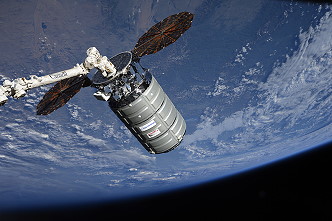 |
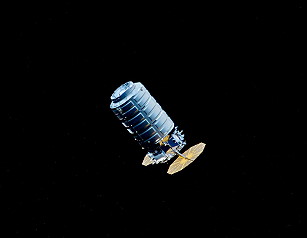 |
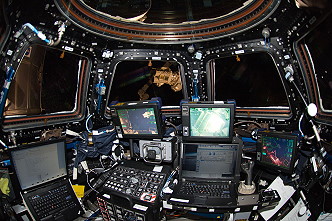 |
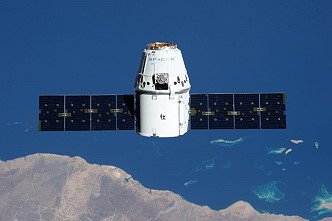 |
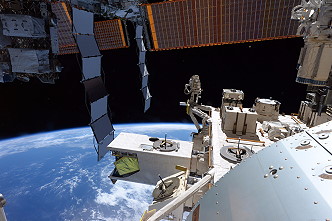 |
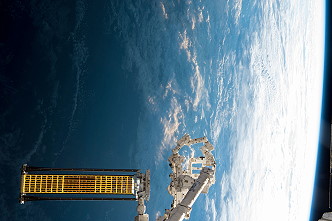 |
 |
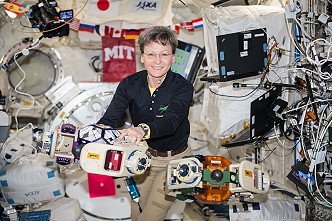 |
 |
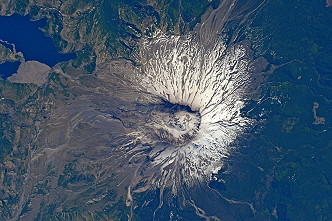 |
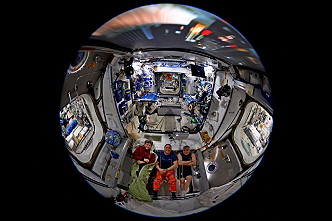 |
 |
 |
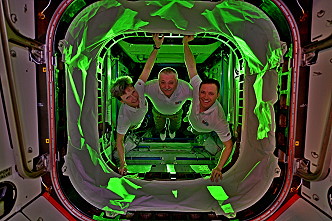 |
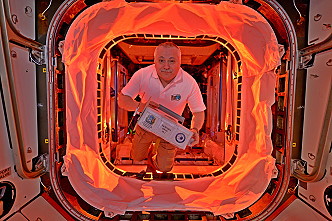 |
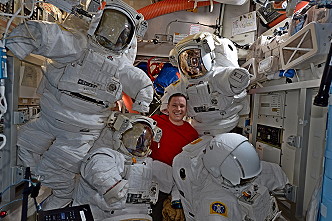 |
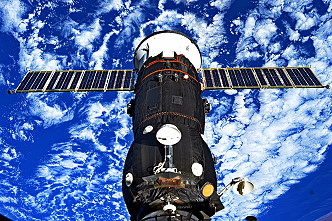 |
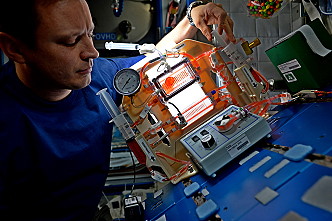 |
 |
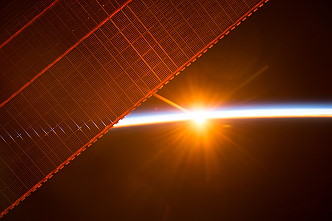 |
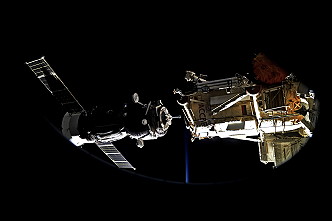 |
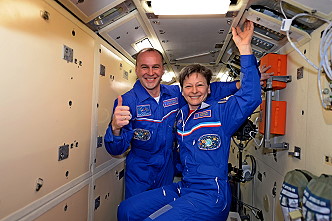 |
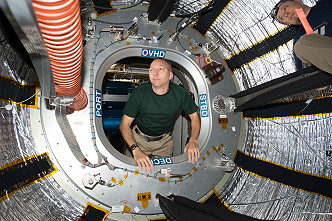 |
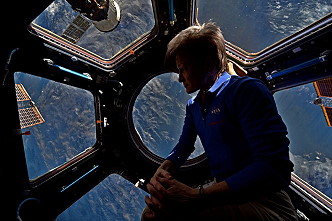 |
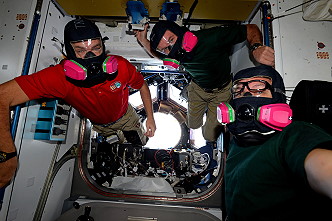 |
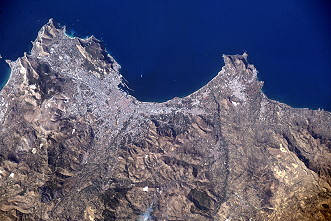 |
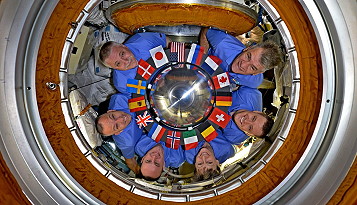 |
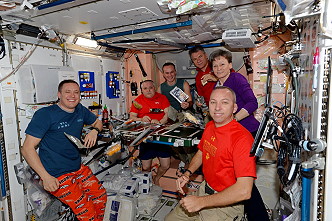 |
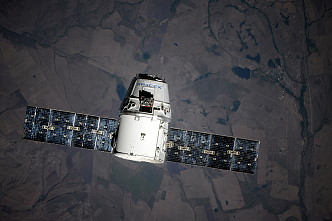 |
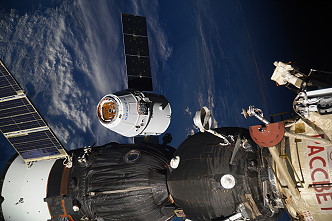 |
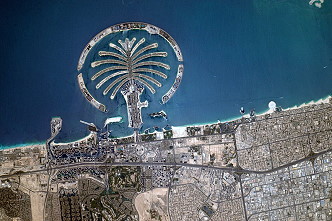 |
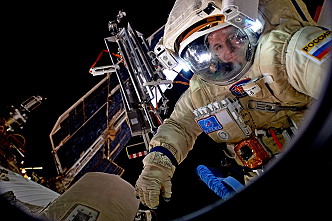 |
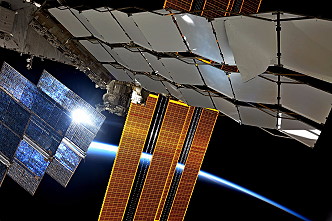 |
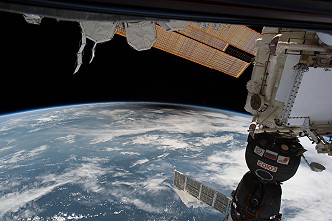 |
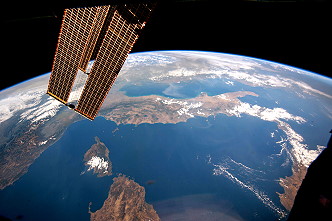 |
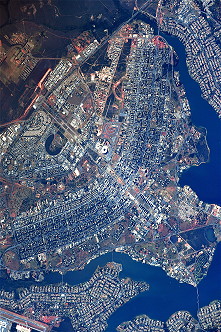 |
more Earth observation photos |
|
more EVA photos |
|
| © |  |
Last update on December 15, 2020.  |
 |